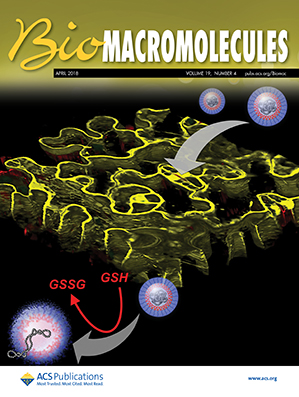Poly(Oligo(Ethylene Glycol) Methacrylate)-Based Polymers in Biomedical Applications: Preparation and Applications
IF 5.4
2区 化学
Q1 BIOCHEMISTRY & MOLECULAR BIOLOGY
引用次数: 0
Abstract
While poly(ethylene glycol) (PEG) has been widely applied in a host of biomedical applications due to its antifouling properties, its limited potential for functionalization and emerging concerns over potential immunogenicity have inspired the development of PEG alternatives. Herein, we review the use of poly(oligo(ethylene glycol) methacrylate) (POEGMA) as a PEG alternative that can provide significantly more synthetic versatility, minimize immunogenicity, and open up additional applications (e.g., thermoresponsive devices) based on precise control over the (co)polymer composition, the backbone molecular weight, and the side chain molecular weight. The synthetic pathways and applications of POEGMA as a surface or biomolecular grafting agent, a hydrogel, a microgel/nanogel, and a nanoparticle stabilizer are comprehensively summarized, with applications in drug delivery, tissue engineering/wound healing, and biosensing particularly highlighted to show how the unique properties of POEGMA can impart improved or unique application performance. Future directions to better leverage the properties of POEGMA in diverse applications are also proposed.
- Download: Download high-res image (59KB)
- Download: Download full-size image
聚低聚(乙二醇)甲基丙烯酸酯)基聚合物在生物医学中的应用:制备和应用。
虽然聚乙二醇(PEG)由于其防污性能已广泛应用于许多生物医学应用,但其有限的功能化潜力和对潜在免疫原性的新关注激发了PEG替代品的发展。在此,我们回顾了聚低聚(乙二醇)甲基丙烯酸酯(POEGMA)作为PEG替代品的使用,它可以提供更多的合成通用性,最大限度地减少免疫原性,并基于对(co)聚合物组成、主链分子量和侧链分子量的精确控制,开辟了其他应用(例如,热响应装置)。本文全面总结了POEGMA作为表面或生物分子接枝剂、水凝胶、微凝胶/纳米凝胶和纳米颗粒稳定剂的合成途径和应用,特别强调了POEGMA在药物输送、组织工程/伤口愈合和生物传感方面的应用,以展示POEGMA的独特性能如何赋予改进或独特的应用性能。未来的发展方向是更好地利用POEGMA在各种应用中的性能。
本文章由计算机程序翻译,如有差异,请以英文原文为准。
求助全文
约1分钟内获得全文
求助全文
来源期刊

Biomacromolecules
化学-高分子科学
CiteScore
10.60
自引率
4.80%
发文量
417
审稿时长
1.6 months
期刊介绍:
Biomacromolecules is a leading forum for the dissemination of cutting-edge research at the interface of polymer science and biology. Submissions to Biomacromolecules should contain strong elements of innovation in terms of macromolecular design, synthesis and characterization, or in the application of polymer materials to biology and medicine.
Topics covered by Biomacromolecules include, but are not exclusively limited to: sustainable polymers, polymers based on natural and renewable resources, degradable polymers, polymer conjugates, polymeric drugs, polymers in biocatalysis, biomacromolecular assembly, biomimetic polymers, polymer-biomineral hybrids, biomimetic-polymer processing, polymer recycling, bioactive polymer surfaces, original polymer design for biomedical applications such as immunotherapy, drug delivery, gene delivery, antimicrobial applications, diagnostic imaging and biosensing, polymers in tissue engineering and regenerative medicine, polymeric scaffolds and hydrogels for cell culture and delivery.
 求助内容:
求助内容: 应助结果提醒方式:
应助结果提醒方式:


